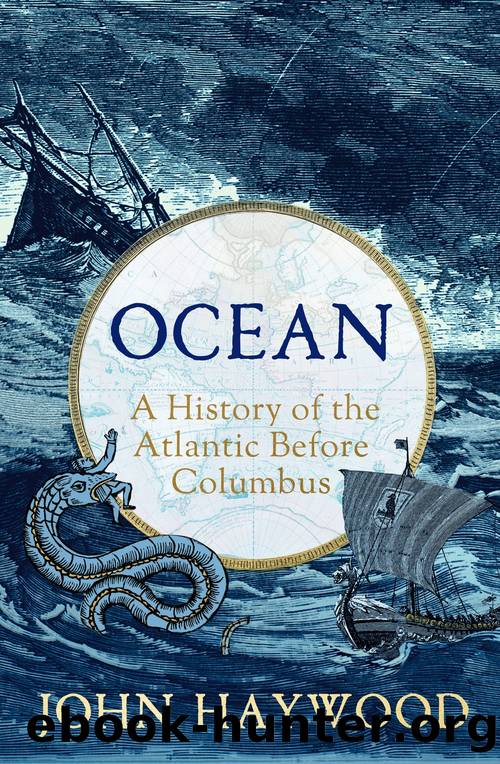Ocean by John Haywood

Author:John Haywood
Language: eng
Format: epub
ISBN: 9781801109888
Publisher: Bloomsbury Publishing
Unicorn horns
Another almost literally mythical Greenland luxury were the slender, spiralling narwhal tusks which medieval Europeans credulously believed were unicorn horns. Look at any medieval depiction of a unicorn, for example in the Royal Arms of Scotland, and they all sport narwhal tusks on their heads. There was good money to be made from the deception. Powdered unicorn horn was believed to be a universal antidote to poisons, so paranoid rulers were willing to pay extravagant sums to acquire them. Englandâs Queen Elizabeth I, who knew that plenty of people wished her dead, owned one valued at £10,000, the equivalent of over £2 million ($2.5 million) today. Although the true source of these unicorn horns was certainly known by some in Norway by the thirteenth century, it did not become widely known until the deception was exposed by the Danish scientist Ole Worm in 1638. Even then, as late as 1672 King Frederick III of Denmark ordered a coronation throne made of âunicornâ horn. Although it is no longer used for coronations, the throne can still be seen in Rosenborg palace in Copenhagen. It is, of course, made with narwhal tusks. If anyone knew the truth about Queen Elizabethâs unicorn horn, they probably thought it wiser to keep it to themselves: she was notoriously short-tempered, and it would have taken someone quite brave to tell her sheâd been conned out of the price of a couple of galleons.c
Stockfish, air-dried cod, was an important part of the diet of medieval Icelanders and Norwegians and also one of their most lucrative exports to the rest of Europe (see Chapter 13), where there was high demand for fish because of the churchâs prohibition of eating meat on Fridays and other holy days. The Greenland settlements were within the range of Atlantic cod, so it is surprising that there is very little evidence that the Norse Greenlanders ever caught cod, either for their own consumption or to produce stockfish for export. Fishbones are common finds in medieval Icelandic and Norwegian domestic middens, but they are almost completely absent from domestic middens in the settlements, despite excellent conditions for the preservation of organic remains. Distance from markets cannot be the reason for this, because stockfish is easily transported and, so long as it is kept dry, remains edible for years. The explanation may be that producing stockfish is a winter activity, and sea ice would have prevented the Greenlanders from fishing.
Download
This site does not store any files on its server. We only index and link to content provided by other sites. Please contact the content providers to delete copyright contents if any and email us, we'll remove relevant links or contents immediately.
| Civilization & Culture | Expeditions & Discoveries |
| Jewish | Maritime History & Piracy |
| Religious | Slavery & Emancipation |
| Women in History |
Cecilia; Or, Memoirs of an Heiress — Volume 1 by Fanny Burney(32491)
Cecilia; Or, Memoirs of an Heiress — Volume 2 by Fanny Burney(31909)
Cecilia; Or, Memoirs of an Heiress — Volume 3 by Fanny Burney(31887)
The Secret History by Donna Tartt(18939)
Sapiens: A Brief History of Humankind by Yuval Noah Harari(14311)
Leonardo da Vinci by Walter Isaacson(13232)
The Radium Girls by Kate Moore(11967)
Sapiens by Yuval Noah Harari(5321)
How Democracies Die by Steven Levitsky & Daniel Ziblatt(5168)
The Wind in My Hair by Masih Alinejad(5056)
Homo Deus: A Brief History of Tomorrow by Yuval Noah Harari(4870)
Endurance: Shackleton's Incredible Voyage by Alfred Lansing(4715)
Man's Search for Meaning by Viktor Frankl(4495)
The Silk Roads by Peter Frankopan(4487)
Millionaire: The Philanderer, Gambler, and Duelist Who Invented Modern Finance by Janet Gleeson(4417)
The Rape of Nanking by Iris Chang(4165)
Joan of Arc by Mary Gordon(4051)
The Motorcycle Diaries by Ernesto Che Guevara(4046)
Hitler in Los Angeles by Steven J. Ross(3923)
